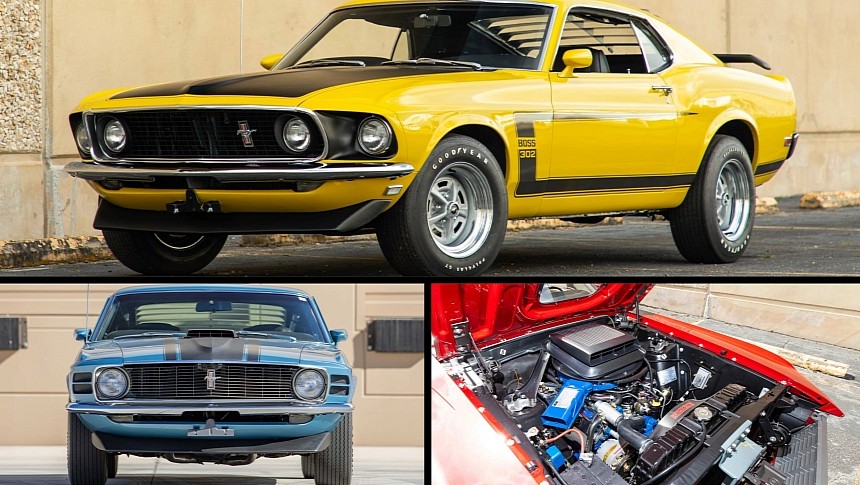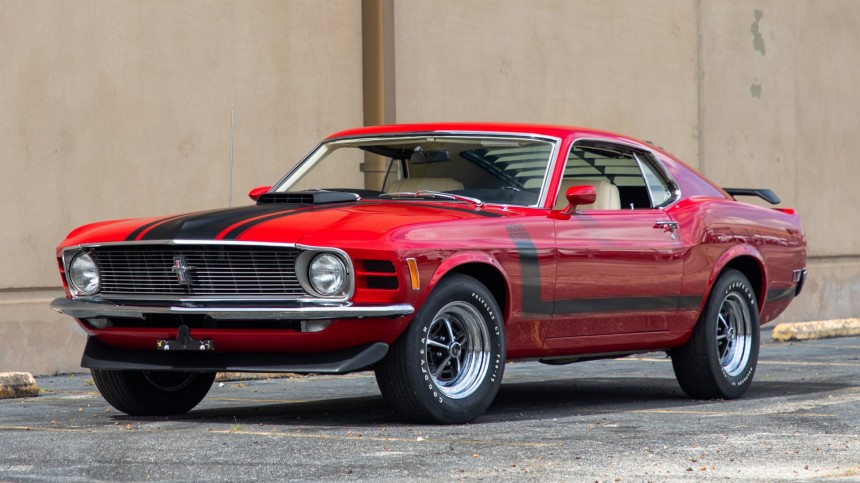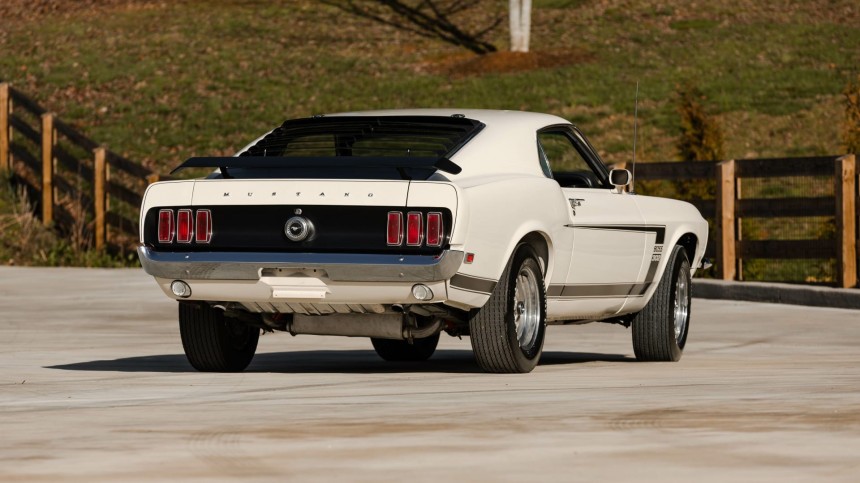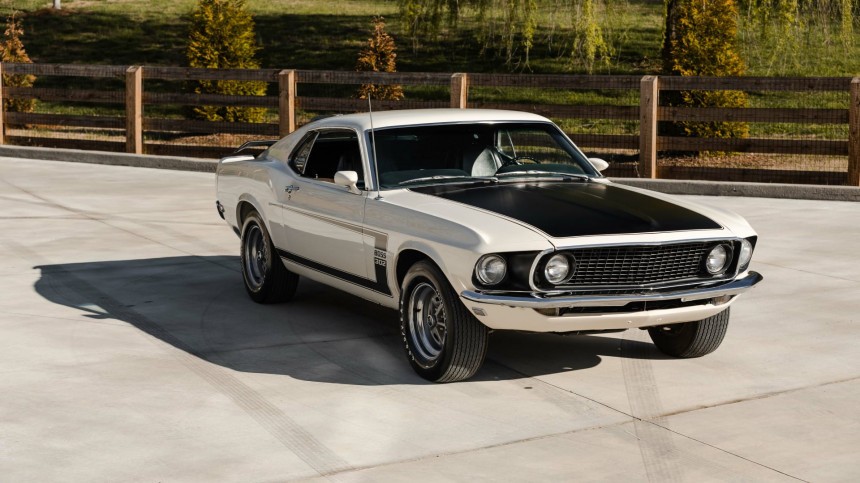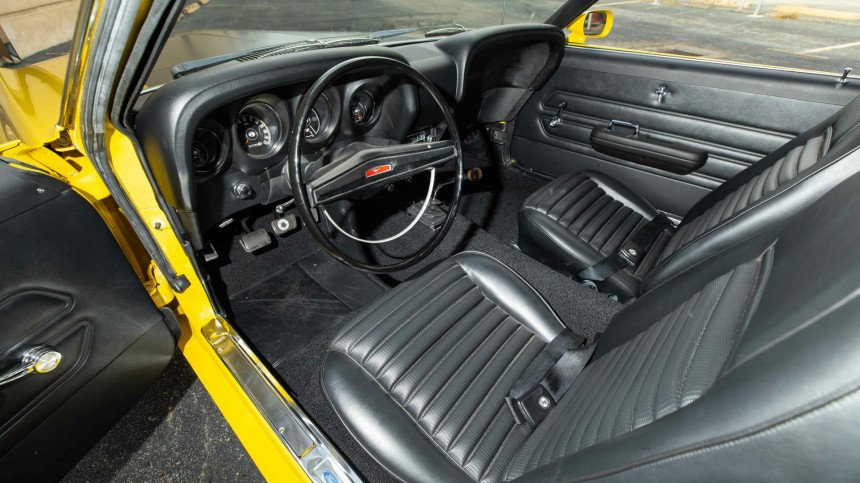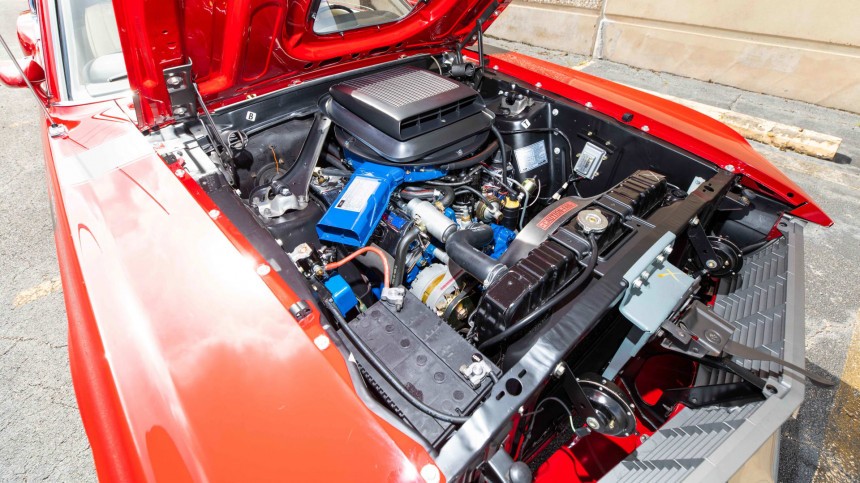The Ford Mustang is arguably one of the most iconic American nameplates of all time. And needless to say, the first-generation version is among the most desirable classic muscle cars. But which one should you buy in 2024?
If you're into the early version and you're not necessarily interested in big oomph, you should definitely go with the 1965-1966 model with the 200-cubic-inch (3.3-liter) inline-six. It's decently potent at 120 horsepower. But more importantly, a nicely restored example or a solid survivor won't break the bank.
If high horsepower is an important factor, then you're better off with Cobra Jet-powered examples from 1968 through 1971. But you can also add a bit of limited-edition rarity into the mix with the 1969-1970 Mustang Boss 429. But be prepared to write six-figure checks in this case.
While all of the above are great options to consider, one certain Mustang raises above the rest as the Ford-badged pony to buy in 2024: the 1969-1970 Boss 302.
More specifically, Ford wanted a piece of the series' "Over 2-liter" class action under new regulations. The Mustang wasn't new to Trans-Am. Ford had won the inaugural 1966 season against Plymouth and Dodge. It then returned to score a narrow championship win against Mercury, while Chevrolet was becoming stronger thanks to the new Camaro Z28.
In 1968, however, the Camaro proved almost unbeatable with Mark Donohue behind the steering. With ten wins in 13 races, Chevrolet won the series by a comfortable lead, leaving Ford to fight for second place with newcomers AMC.
To get back on the horse, Ford designed a beefed-up version of the 302-cubic-inch (4.9-liter) small-block it had offered in 1968 with 230 horsepower. Featuring a unique layout with different block casting, four-bolt mains, and heads from the larger Cleveland V8, the Boss 302 delivered 290 horsepower.
The unique engine got a special Mustang to roar into. Designed by Larry Shinoda, the Boss 302 broke cover with distinctive reflective stripes, a front spoiler, and a rear deck wing. Shinoda also deleted the fake rear quarter panel air scoops found on the regular Mustang for a sleeker appearance. The package also included a competition-spec suspension.
The Boss 302 returned for the 1970 model year with new features. For starters, it got the new grille that replaced the outer headlamps with two horizontal vents. A striped hood replaced the blacked-out unit of the 1969 version, while the sides got hockey stick stripes. Ford redesigned the dual exhaust system and the suspension.
But even though it didn't manage to defeat the Camaro Z28 at the height of its SCCA career, the Boss 302 provided Ford with a worthy competitor in showrooms. One that it needed ever since the Camaro Z28 debuted during the 1967 model year.
While it was nowhere near as potent as the Cobra Jet and Boss 429, the Boss 302 was impressively fast, thanks to its power-to-weight ratio. The pony car needed 6.9 seconds to hit 60 mph (97 kph) from a standing start and ran the quarter-mile in 14.6 seconds.
But more importantly, the Boss 302 was the most-track capable Mustang at the time, even when compared to earlier iterations of the Shelby GT350. It's the Mustang classic to own if you also plan on hitting historic racing events from time to time.
Granted, the 1970 version isn't very appealing due to its inner-grille dual headlamps design with horizontal vents to the corners, but the front spoiler, rear wing, and stripe package of the Boss 302 bundle make it look better. Especially if the car is also finished in a high-impact color like Calypso Coral, Acapulco Blue, or Grabber Green.
How much does it cost? Well, the value varies depending on many factors, including mileage, condition, and originality. Unrestored and unmolested examples in Excellent condition will set you back more than $100,000, as will most cars that have been restored to original specifications. Numbers-matching drivetrain components also keep the stickers high.
Examples that are still in solid condition but need a lot of work are notably more affordable and often change hands for less than $50,000. These cars rarely trade for under $30,000, and these sums usually involve severe rust issues and missing drivetrains.
The most expensive Boss 302 ever auctioned is a 1970 version that went under the hammer for $258,500 in 2022. In 2023, I saw a couple of restored units change hands for a little over $200,000. But these are rare exceptions.
Of the 40 auction-sold examples I've documented in 2023, about 60% found new homes for $73,000 to $100,000. All were restored originals, but not every car had a numbers-matching V8.
Granted, some of these cars did not survive to see 2023, and a few thousand need restoration to run and drive again. However, the Boss 302's survival rate seems to be better than many other muscle cars from the golden era. And while it's rarer than the Chevrolet Camaro Z28, the Boss 302 is definitely more common than the SCCA-spec Dodge Challenger T/A and Plymouth AAR 'Cuda (2,399 and 2,724 units made, respectively).
If high horsepower is an important factor, then you're better off with Cobra Jet-powered examples from 1968 through 1971. But you can also add a bit of limited-edition rarity into the mix with the 1969-1970 Mustang Boss 429. But be prepared to write six-figure checks in this case.
While all of the above are great options to consider, one certain Mustang raises above the rest as the Ford-badged pony to buy in 2024: the 1969-1970 Boss 302.
What exactly is the Ford Mustang Boss 302?
The Boss 302 is one of two homologation specials Ford introduced in 1969. It was launched alongside the Boss 429, which was created to homologate the 429-cubic-inch (7.0-liter) Boss V8 engine for NASCAR. Unlike the latter, the Boss 302 wasn't just about the engine. Ford introduced this nameplate to homologate an entire Mustang for SCCA Trans-Am racing.In 1968, however, the Camaro proved almost unbeatable with Mark Donohue behind the steering. With ten wins in 13 races, Chevrolet won the series by a comfortable lead, leaving Ford to fight for second place with newcomers AMC.
To get back on the horse, Ford designed a beefed-up version of the 302-cubic-inch (4.9-liter) small-block it had offered in 1968 with 230 horsepower. Featuring a unique layout with different block casting, four-bolt mains, and heads from the larger Cleveland V8, the Boss 302 delivered 290 horsepower.
The unique engine got a special Mustang to roar into. Designed by Larry Shinoda, the Boss 302 broke cover with distinctive reflective stripes, a front spoiler, and a rear deck wing. Shinoda also deleted the fake rear quarter panel air scoops found on the regular Mustang for a sleeker appearance. The package also included a competition-spec suspension.
It delivers solid performance
The Boss 302 didn't help Ford stop Chevrolet from dominating the SCCA Trans-Am series in 1969. Even though it fared better than its predecessor and won four races, the Camaro Z28 scored eight wins for yet another comfortable triumph in the manufacturers' standings. Ford finally won the championship in 1970, but that was mainly because Roger Penske and Mark Donohue had left Chevrolet for American Motors.But even though it didn't manage to defeat the Camaro Z28 at the height of its SCCA career, the Boss 302 provided Ford with a worthy competitor in showrooms. One that it needed ever since the Camaro Z28 debuted during the 1967 model year.
While it was nowhere near as potent as the Cobra Jet and Boss 429, the Boss 302 was impressively fast, thanks to its power-to-weight ratio. The pony car needed 6.9 seconds to hit 60 mph (97 kph) from a standing start and ran the quarter-mile in 14.6 seconds.
It's a good-looking muscle car
There's no denying that the Boss 302 is a good-looking rig. It arrived right when Ford redesigned the Mustang for the 1969 model year, giving it its most aggressive design yet. And even though Ford restyled the Mustang again for the 1971 model year, the 1969 version remains the best-looking iteration in my book. With muscular haunches, a mean front fascia, and a sleek profile, the 1969 Mustang has it all.Granted, the 1970 version isn't very appealing due to its inner-grille dual headlamps design with horizontal vents to the corners, but the front spoiler, rear wing, and stripe package of the Boss 302 bundle make it look better. Especially if the car is also finished in a high-impact color like Calypso Coral, Acapulco Blue, or Grabber Green.
It's still somewhat affordable
The limited-edition, high-performance versions of the first-gen Mustang are notably more expensive than the regular version nowadays. However, the Boss 302 remains somewhat more affordable compared to the Shelby cars, the Boss 429, and most Cobra Jet-equipped Mach 1s.Examples that are still in solid condition but need a lot of work are notably more affordable and often change hands for less than $50,000. These cars rarely trade for under $30,000, and these sums usually involve severe rust issues and missing drivetrains.
The most expensive Boss 302 ever auctioned is a 1970 version that went under the hammer for $258,500 in 2022. In 2023, I saw a couple of restored units change hands for a little over $200,000. But these are rare exceptions.
Of the 40 auction-sold examples I've documented in 2023, about 60% found new homes for $73,000 to $100,000. All were restored originals, but not every car had a numbers-matching V8.
There are plenty of them out there
Although Ford kept the Boss 302 in production for only two years, this muscle car isn't very scarce. Demand was rather low in 1969, with only 1,628 examples sold, but production grew to 7,013 units in 1970. In all, Ford sold 8,641. For reference, the Boss 302 outsold the Boss 429 by a ratio of 6.3 to one.Granted, some of these cars did not survive to see 2023, and a few thousand need restoration to run and drive again. However, the Boss 302's survival rate seems to be better than many other muscle cars from the golden era. And while it's rarer than the Chevrolet Camaro Z28, the Boss 302 is definitely more common than the SCCA-spec Dodge Challenger T/A and Plymouth AAR 'Cuda (2,399 and 2,724 units made, respectively).
